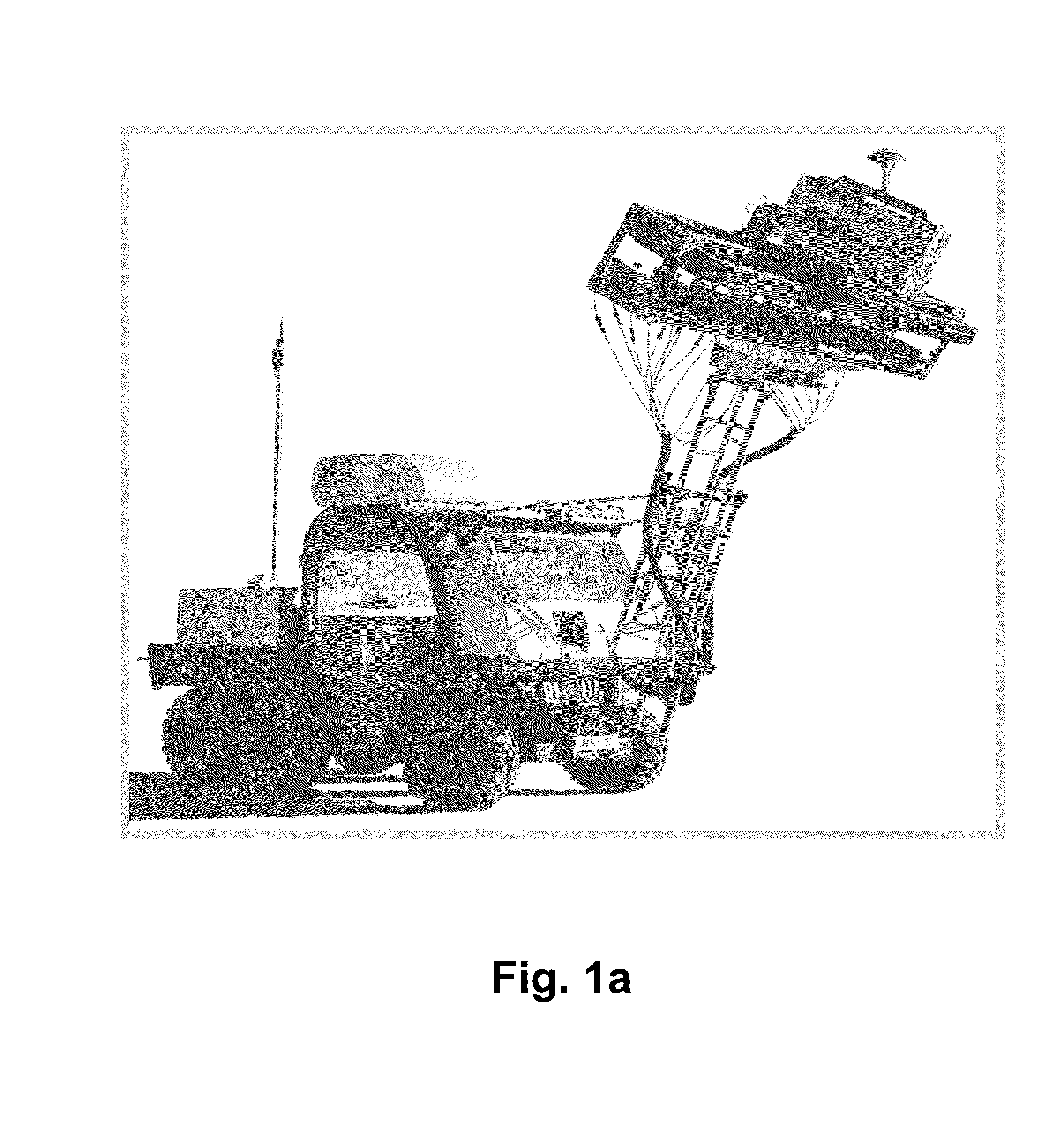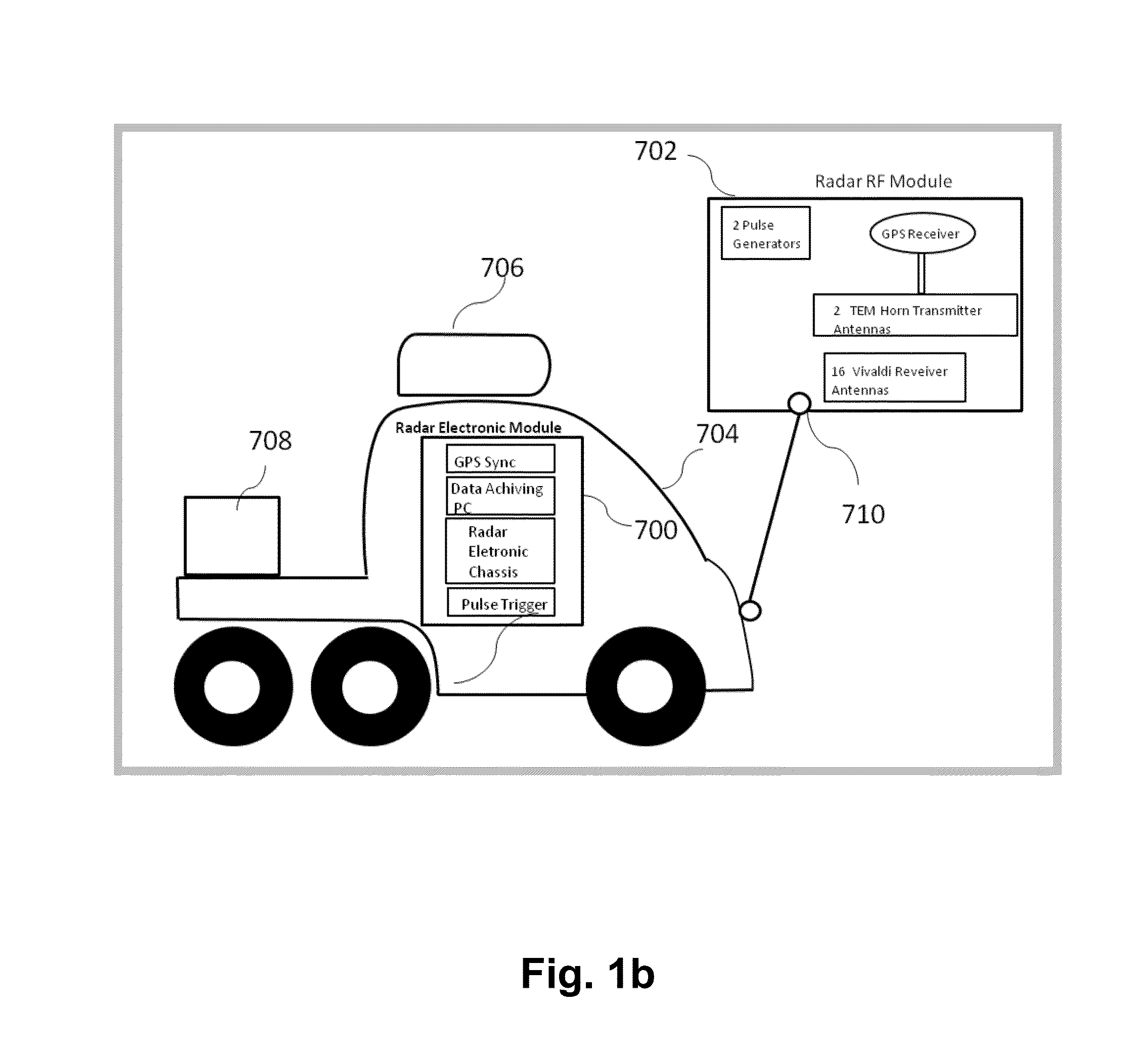Moving Multi-Polarization Multi-Transmitter/Receiver Ground Penetrating Radar System and Signal Processing for Buried Target Detection
a multi-polarization, ground-penetration radar technology, applied in the field of ground-penetration radar systems, can solve the problems of multi-transmitter/receiver (array-based) gpr community to exploit synthetic aperture information, and achieve the effects of suppressing surface targets, suppressing the signature of surface clutter, and enhancing the signature of buried structures
- Summary
- Abstract
- Description
- Claims
- Application Information
AI Technical Summary
Benefits of technology
Problems solved by technology
Method used
Image
Examples
Embodiment Construction
[0035]A specific reference is made to a grace period inventor disclosure at a government symposium as follows: Tuan Ton, David Wong, and Mehrdad Soumekh, “Adaptive Multi-Transceiver Imaging for Forward-Looking Ground Penetrating Radar,” 58th Annual Meeting of the Military Sensing Symposia (MSS) Tri Service Radar Symposium. Ton et al. does not name additional authors other than the named co-inventors of the subject patent application. The Ton et al. presentation in Volume 1 of MSS-TSRS-12-033, 2012 is not available to the public.
[0036]1. ALARIC Multi-Transmitter / Receiver (Array-Based) GPR: A moving multi-polarization multi-transmitter / receiver Forward Looking Ground Penetrating Radar (FLGPR) system is discussed, e.g., for standoff detection of buried targets within an irradiated scene.
[0037]ALARIC is a prototype radar system (FIG. 1a) designed and constructed by the U.S. Army Night Vision and Electronic Sensors Directorate (NVESD). Shown in FIG. 1a is an exemplary profile view of veh...
PUM
 Login to View More
Login to View More Abstract
Description
Claims
Application Information
 Login to View More
Login to View More - R&D
- Intellectual Property
- Life Sciences
- Materials
- Tech Scout
- Unparalleled Data Quality
- Higher Quality Content
- 60% Fewer Hallucinations
Browse by: Latest US Patents, China's latest patents, Technical Efficacy Thesaurus, Application Domain, Technology Topic, Popular Technical Reports.
© 2025 PatSnap. All rights reserved.Legal|Privacy policy|Modern Slavery Act Transparency Statement|Sitemap|About US| Contact US: help@patsnap.com



